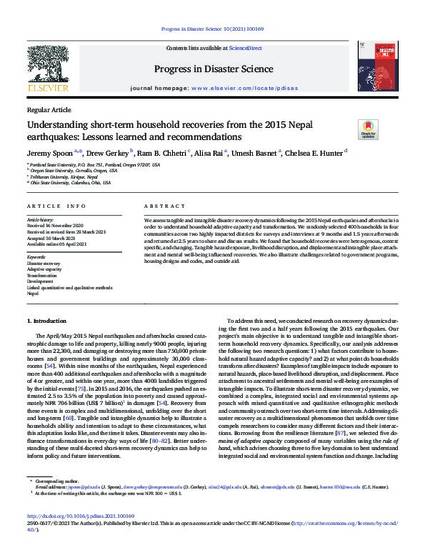
- Disaster recovery -- Quantitative and qualitative methods -- Nepal
We assess tangible and intangible disaster recovery dynamics following the 2015 Nepal earthquakes and aftershocks in order to understand household adaptive capacity and transformation. We randomly selected 400 households in four communities across two highly impacted districts for surveys and interviews at 9 months and 1.5 years afterwards and returned at 2.5 years to share and discuss results. We found that household recoveries were heterogenous, context specific, and changing. Tangible hazard exposure, livelihood disruption, and displacement and intangible place attachment and mental well-being influenced recoveries. We also illustrate challenges related to government programs, housing designs and codes, and outside aid.
Copyright (c) 2021 The Authors
This work is licensed under a Creative Commons Attribution 4.0 International License.
